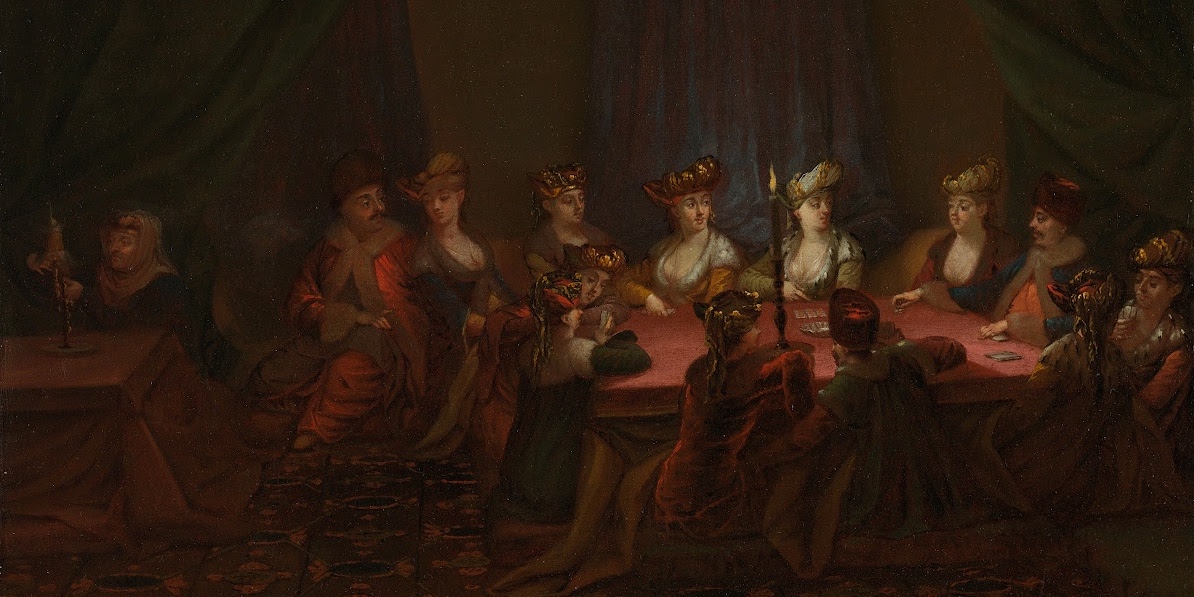Local Autonomy and the Tanzimat | Elektra Kostopoulou
113. The Question of Late Ottoman Decentralization
 |
| Turkish official with 'sole survivor' of village of 350 in Candia, Crete (1897) Source: Library of Congress |
The Tanzimat era is conventionally viewed as a period of centralization in the Ottoman Empire, and as such, any concessions to local interests or extensions of autonomy during this period are viewed as a failure of state policy. However, given the aspects of decentralization also contained within late Ottoman reform, it is worth considering local autonomy as a strategy employed by the Ottomans in their attempt to govern disparate territories. In this episode, Elektra Kostopoulou explores these issues and discusses the transformation of Ottoman rule in Crete during the nineteenth century and the eventual creation of an autonomous region the in 1898.
 |
Elektra Kostopoulou holds a PhD in History from Boğaziçi University and is currently a visiting scholar at New York University. (see academia.edu) |
 | Chris Gratien is a doctoral candidate at Georgetown University researching the social and environmental history of the Ottoman Empire and the modern Middle East. (see academia.edu) |
Citation: "Local Autonomy and the Tanzimat: the Case of Crete," Elektra Kostopoulou and Chris Gratien, Ottoman History Podcast, No. 113 (July 11, 2013) http://www.ottomanhistorypodcast.com/2011/07/autonomous-crete-greece.html.
SELECT BIBLIOGRAPHY
 |
| Flag of Autonomous Crete (1898-1913) |
Abu-Manneh, Butrus. “Jerusalem in the Tanzimat Period: The New Ottoman Administration and the Notables.” Die Welt Des Islams 30, no. 1/4 (1990): 143-168. doi:10.2307/1571044.
———. “Mehmed Ali Pasa and Sultan Mahmud II: The Genesis of a Conflict.” Turkish Historical Review 1, no. 1 (2010): 1–24. doi:10.1163/187754610X495003.
———. “The Sultan and the Bureaucracy: The Anti-Tanzimat Concepts of Grand Vizier Mahmud Nedim Paşa.” International Journal of Middle East Studies 22, no. 03 (1990): 257–274. doi:10.1017/S0020743800034061.
Adıyeke, Ayşe Nükhet. Fethinden kaybına Girit. İstanbul: Babıali Kültür Yayıncılığı, 2007.
Anscombe, Frederick F., ed. The Ottoman Balkans, 1750-1830. Princeton, N.J.: Markus Wiener Publishers, 2006.
Barkey, Karen. Bandits and Bureaucrats : the Ottoman Route to State Centralization. Ithaca N.Y.: Cornell University Press, 1997.
Blumi, I. “Teaching Loyalty in the Late Ottoman Balkans: Educational Reform in the Vilayets of Manastir and Yanya, 1878-1912.” Comparative Studies of South Asia, Africa and the Middle East 21, no. 1–2 (January 2001): 15–23. doi:10.1215/1089201X-21-1-2-15.
Çetinsaya, Gökhan. Ottoman Administration of Iraq, 1890-1908. London: Rutledge, 2006.
Deringil, Selim. “Legitimacy Structures in the Ottoman State: The Reign of Abdulhamid II (1876-1909).” International Journal of Middle East Studies 23, no. 3 (August 1991): 345–359.
———. The Well-Protected Domains: Ideology and the Legitimation of Power in the Ottoman Empire, 1876-1909. London: I.B. Tauris, 1999.
———. “‘They Live in a State of Nomadism and Savagery’: The Late Ottoman Empire and the Post-Colonial Debate.” Comparative Studies in Society and History 45, no. 02 (2003): 311–342. doi:10.1017/S001041750300015X.
Doumani, Beshara. Rediscovering Palestine: Merchants and Peasants in Jabal Nablus, 1700-1900. Berkley: University of California Press, 1995.
Eldem, Edhem, "Ottoman Financial Integration with Europe: Foreign Loans, the Ottoman Bank and the Ottoman Public Debt.” European Review 13, no. 3 (2005): 431–445.
Emrence, Cem. “Imperial Paths, Big Comparisons: The Late Ottoman Empire.” Journal of Global History 3 (2008): 289–311.
Fahmy, Khaled. All The Pasha’s Men: Mehmed Ali, His Army and the Making of Modern Egypt. New York: American University in Cairo Press, 1997.
Greene, Molly. A Shared World: Christians and Muslims in the Early Modern Mediterranean. Princeton, N.J: Princeton University Press, 2000.
Heper, Metin. “Center and Periphery in the Ottoman Empire: With Special Reference to the Nineteenth Century.” International Political Science Review 1, no. 1 (1980): 81–105.
Kafadar, Cemal. “The Question of Ottoman Decline.” Harvard Middle Eastern and Islamic Review 4, no. 1 (1998 1997): 30–75.
Kayalı, Hasan. Arabs and Young Turks : Ottomanism, Arabism, and Islamism in the Ottoman Empire, 1908-1918. Berkeley: University of California Press, 1997.
Khoury, Dina Rizk, and Dane Kennedy. “Comparing Empires: The Ottoman Domains and the British Raj in the Long Nineteenth Century.” Comparative Studies of South Asia, Africa and the Middle East 27, no. 2 (2007): 233–244.
Klein, Janet. The Margins of Empire Kurdish: Militias in the Ottoman Tribal Zone. Stanford, Calif.: Stanford University Press, 2011.
Konortas, Paraskevas. “From Ta’ife to Millet: Ottoman Terms for the Greek Orthodox Community.” In Ottoman Greeks in the Age of Nationalism: Politics, Economy, and Society in the Nineteenth Century, edited by D. Gondicas and C. P Issawi. Princeton: Darwin Press, 1999.
Kuehn, Thomas. Empire, Islam, and Politics of Difference : Ottoman Rule in Yemen, 1849-1919. Leiden; Boston: Brill, 2011.
Makdisi, Ussama Samir. The Culture of Sectarianism: Community, History, and Violence in Nineteenth-Century Ottoman Lebanon. Berkeley, Calif: University of California Press, 2000.
Mikhail, Alan, and Christine M. Philliou. “The Ottoman Empire and the Imperial Turn.” Comparative Studies in Society and History 54, no. 04 (2012): 721–745. doi:10.1017/S0010417512000394.
Philliou, Christine M, “The Ottoman Empire’s Absent Nineteenth Century: Autonomous Subjects.” In Untold Histories of the Middle East: Recovering Voices from the 19th and 20th Centuries, edited by Amy Singer, Christoph K. Neumann, and Selçuk Akşin Somel, 143–178. Oxon: Taylor & Francis, 2011.
Powell, Eve Troutt. A Different Shade of Colonialism: Egypt, Great Britain, and the Mastery of the Sudan. Berkley: University of California Press, 2003.
Rogan, Eugene L. Frontiers of the State in the Late Ottoman Empire: Transjordan, 1850-1921. Cambridge: Cambridge University Press, 2002.
Yazbak, Maḥmūd. Haifa in the Late Ottoman Period, 1864-1914: A Muslim Town in Transition. Leiden: Brill, 1998.
IMAGES
 |
| Postcard of Crete |
 |
| Küçük Hasan or Janissaries’ mosque in Chania (western Crete), 17th century Source: Elektra Kostopoulou |
 |
| Arrival of the Post |
 |
| Cretan Gendarmerie |
Music: Ross Daly - Hatif











Comments
Post a Comment
Due to an overwhelming amount of spam, we no longer read comments submitted to the blog.